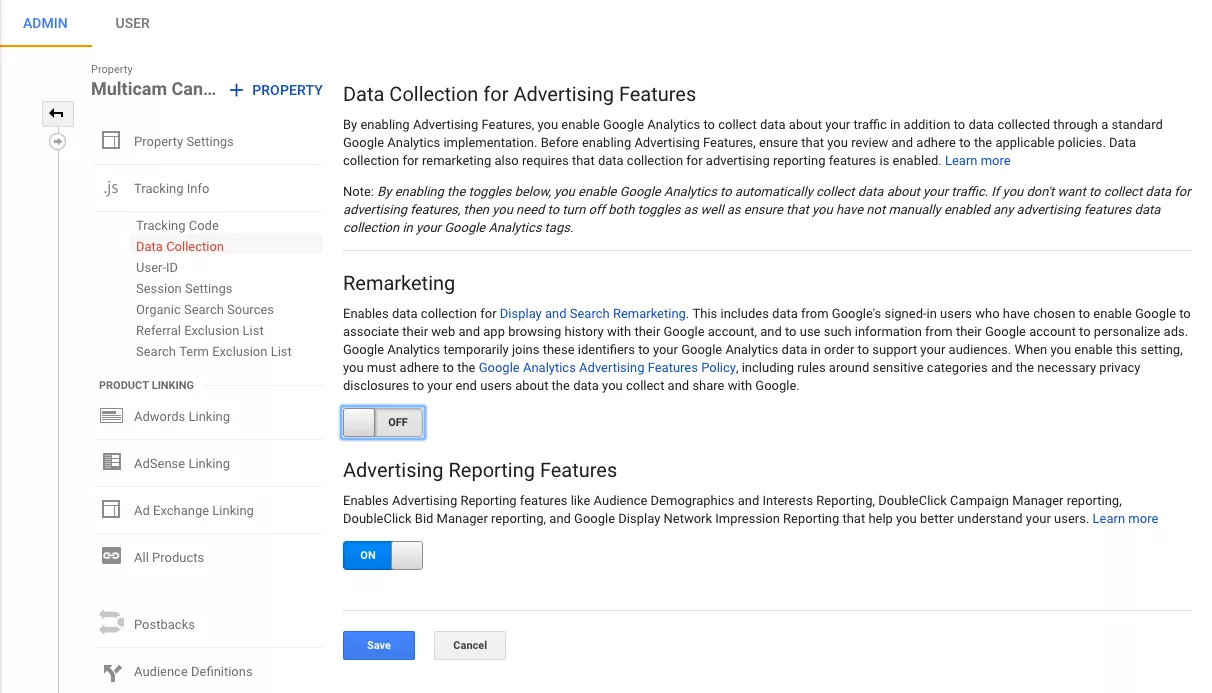Taking Advantage Of Remarketing in Google Analytics: A Comprehensive Overview
Utilizing remarketing in Google Analytics uses businesses a critical side in reaching out to possible clients. The capability to target individuals who have currently communicated with your web site provides a distinct opportunity for tailored advertising initiatives. By recognizing how to craft audience lists and release them successfully, organizations can dramatically boost their conversion prices. The intricacies of establishing up and maximizing remarketing projects call for a comprehensive understanding of target market division and performance evaluation. This overview will drop light on the crucial actions involved in harnessing the complete possibility of remarketing in Google Analytics, bring about improved marketing outcomes.
Recognizing Remarketing in Google Analytics
Remarketing in Google Analytics enables organizations to strategically target individuals who have previously interacted with their web site or mobile application. By leveraging data from Google Analytics, services can develop tailored remarketing lists based upon individual behavior, such as web pages gone to, activities taken, or certain goals achieved. This effective tool enables services to re-engage with users that have revealed interest in their items or services, inevitably increasing the chance of conversion.
Comprehending the various types of remarketing approaches is critical for a successful project - What Is “Remarketing” In Google Analytics?. Google Analytics provides numerous options, including common remarketing, dynamic remarketing, and remarketing listings for search advertisements (RLSA) Each type serves an one-of-a-kind purpose and can be customized to fulfill particular advertising and marketing purposes
Moreover, assessing the performance of remarketing campaigns is vital for maximizing results. Google Analytics gives valuable insights into the efficiency of different remarketing methods, allowing businesses to make data-driven decisions and fine-tune their targeting technique. By constantly adjusting and monitoring remarketing efforts based on analytics data, businesses can make best use of ROI and drive success in their advertising and marketing initiatives.
Establishing Remarketing Projects

After establishing target market lists, the next action is to connect Google Analytics with Google Ads. By connecting these 2 systems, companies can perfectly move target market lists from Google Analytics to Google Ads for remarketing objectives. This assimilation enables for even more exact targeting and better project efficiency.
Once the accounts are linked, organizations can produce remarketing campaigns in Google Advertisements utilizing the target market provides previously specified in Google Analytics. These projects can be customized with certain ad creatives, messaging, and bidding process techniques to properly re-engage with previous site visitors and drive conversions. By complying with these actions, services can leverage the power of remarketing to boost their marketing efforts and boost ROI.
Utilizing Audience Division Techniques

Predefined segments in Google Analytics allow you to rapidly examine usual audience classifications like brand-new individuals, returning users, or individuals that finished a specific goal on your web site. Personalized sections, on the various other hand, enable you to create special sectors based upon details criteria that are essential to your service purposes. Dynamic remarketing listings immediately change based upon customer actions, revealing personalized advertisements to customers who have communicated with your site in particular methods.
Analyzing Remarketing Performance Metrics
Upon assessing the effectiveness of remarketing projects in Google Analytics, the analysis of crucial efficiency metrics gives important insights right into target market involvement and conversion rates. By diving into metrics such as click-through rates (CTR), conversion rates, cost per purchase (CERTIFIED PUBLIC ACCOUNTANT), and return on advertisement spend (ROAS), marketing experts can evaluate the success of their remarketing initiatives. useful content Evaluating these metrics enables marketing professionals to maximize campaigns, fine-tune target market targeting, and assign spending plans properly to enhance general remarketing performance.
Enhancing Remarketing Strategies
When refining remarketing approaches in Google Analytics, concentrating on audience segmentation is critical for attaining project success. By dividing your audience into details segments based on their habits, demographics, or passions, you can customize your advertisements much more successfully per team. This targeted approach enhances the probability of involving customers who have already shown interest in your services or products, causing higher conversion rates.
One more crucial element of optimizing remarketing techniques is continuously testing and refining your projects (What Is “Remarketing” In Google Analytics?). A/B testing various ad creatives, messaging, or offers can help click for more you identify what resonates best with your target market and drives one of the most conversions. By assessing the performance of these tests in Google Analytics, you can make data-driven decisions to enhance your remarketing efforts even more
Additionally, leveraging vibrant remarketing can substantially boost your campaign results. This function enables you to show personalized ads to customers based upon their previous communications with your site, showcasing products or solutions they have formerly watched. By supplying tailored web content to individuals based on their actions and rate of interests, dynamic remarketing can help raise involvement and drive conversions.
Final Thought
Finally, utilizing remarketing in Google Analytics is a tactical strategy to target individuals who have previously involved with a web site. By creating customized target more info here market lists and making use of audience segmentation approaches, services can optimize remarketing projects for boosted conversion rates. Assessing performance metrics and continually enhancing strategies are essential for optimizing the effectiveness of remarketing initiatives.
Google Analytics uses various choices, consisting of typical remarketing, vibrant remarketing, and remarketing lists for search advertisements (RLSA)After setting up target market lists, the next action is to link Google Analytics with Google Ads. By connecting these 2 platforms, services can seamlessly transfer target market lists from Google Analytics to Google Ads for remarketing objectives.Once the accounts are linked, services can develop remarketing campaigns in Google Advertisements making use of the audience provides formerly defined in Google Analytics.When refining remarketing approaches in Google Analytics, concentrating on audience division is critical for accomplishing project success.